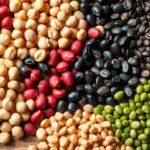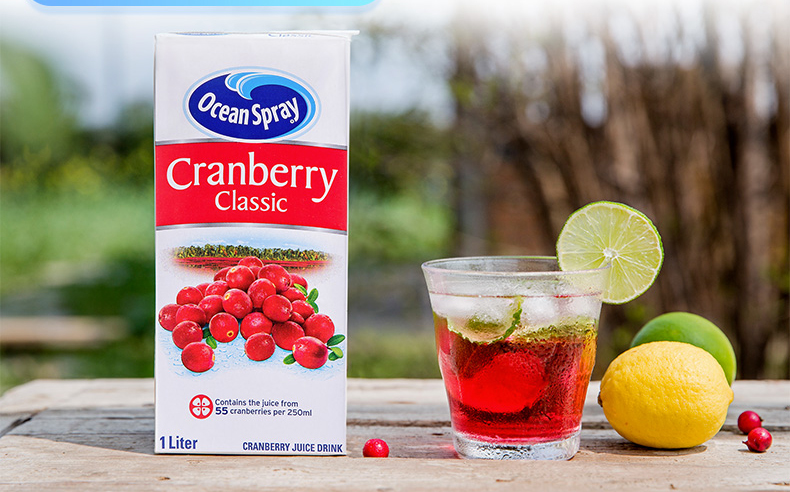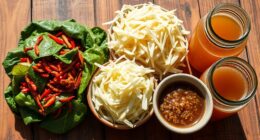Beginning with ancient grains is easy and rewarding. Rinse them well, soak if needed, and cook with a 2:1 water-to-grain ratio until tender. Toastting before cooking adds flavor, and simmering brings out their unique textures. Use broth for added taste or store cooked grains for quick meals later. Experiment with different grains to discover favorites. Keep exploring these versatile ingredients to boost nutrition and flavor in your meals.
Key Takeaways
- Discover popular ancient grains like quinoa, farro, barley, and amaranth, known for their nutritional benefits and unique flavors.
- Rinse grains thoroughly and cook with a 2:1 water-to-grain ratio for optimal texture and flavor.
- Toast grains before cooking to enhance nuttiness, and add herbs or broth for extra flavor.
- Prepare grains in advance and store for quick, healthy meal options like salads, bowls, or side dishes.
- Experiment with different grains to find your favorites and incorporate them into daily meals for added nutrition.

Ancient grains have gained popularity for their rich nutrition and unique flavors, making them a great addition to a healthy diet. These grains, often minimally processed, provide a variety of nutritional benefits that can boost your overall well-being. Unlike refined grains, ancient grains retain more of their natural nutrients, giving you fiber, vitamins, minerals, and antioxidants that support digestion, heart health, and sustained energy levels. Incorporating these grains into your meals can diversify your diet and introduce new textures and flavors, making healthy eating more enjoyable.
Ancient grains boost nutrition and flavor, supporting digestion, heart health, and energy.
When you’re starting out with ancient grains, understanding how to cook them properly is crucial. Each type of grain has its own cooking tips, but generally, you’ll want to rinse them thoroughly before cooking to remove any impurities or excess starch. For example, quinoa and amaranth require a quick rinse, while farro and barley often benefit from soaking beforehand to reduce cooking time and improve digestibility. Use a ratio of about 2 parts water or broth to 1 part grain, bringing it to a boil, then reducing to a simmer and cooking until tender. Cooking times vary—quinoa takes around 15 minutes, while farro can take 30-40 minutes—so check the package instructions or taste-test to ensure *ideal* texture.
Experimentation is key to mastering ancient grains in your kitchen. For a fluffy, rice-like texture, cook grains until just tender but still slightly chewy. If you prefer a softer consistency, cook them a bit longer or add a splash more liquid. You can also toast grains in a dry skillet before cooking to enhance their nutty flavor. Incorporating herbs, spices, or broth during cooking can elevate their taste and make them more appealing as a side dish or base for salads, bowls, and stir-fries.
Another cooking tip is to cook grains in advance and store them in the refrigerator for several days. This makes quick and nutritious meals easier to prepare. You can also incorporate ancient grains into baked goods, salads, or breakfast bowls. Their versatility allows you to use them as a substitute for rice, pasta, or oats, adding variety to your meals without sacrificing nutrition.
Frequently Asked Questions
Are Ancient Grains Suitable for Gluten-Free Diets?
Ancient grains can be suitable for gluten-free diets, but it depends on the specific grain. Some, like quinoa and buckwheat, naturally contain no gluten and fit well with dietary restrictions. However, others, such as spelt and farro, have gluten content and should be avoided if you’re sensitive or allergic. Always check labels and verify that the grain has not been cross-contaminated to confirm it aligns with your dietary needs.
How Do Ancient Grains Compare Nutritionally to Modern Grains?
Ancient grains generally offer more nutritional benefits than modern grains, thanks to their richer grain composition. You’ll find higher levels of fiber, protein, vitamins, and minerals in ancient grains, which support overall health. Modern grains often undergo processing that reduces these nutrients. So, by choosing ancient grains, you get a more wholesome option that boosts your diet’s nutritional quality and provides lasting energy.
Can Ancient Grains Be Used in Baking and Cooking Interchangeably?
You can often use ancient grains in baking and cooking as a grain substitution, but keep in mind they may change flavor profiles and textures. For example, quinoa adds nuttiness, while spelt offers a milder taste. Experimenting with different grains can enhance your dishes, but you might need to adjust cooking times or liquid amounts. Ultimately, ancient grains can be versatile, but understanding their unique characteristics guarantees successful swaps.
Are Ancient Grains More Expensive Than Regular Grains?
Ancient grains are generally more expensive than regular grains due to higher production costs and limited availability issues. You’ll find that their cost comparison often favors traditional grains, especially in mainstream markets. If you’re budget-conscious, you might notice price differences, but their nutritional benefits can make the extra expense worthwhile. Keep in mind, availability issues may also cause fluctuations in price, so shopping around or buying in bulk can help save money.
What Are the Best Storage Methods for Ancient Grains?
You should store ancient grains in airtight containers to keep out moisture and pests. Place them in a cool, dark place like a pantry, away from sunlight and heat. Proper sealing is essential to prevent humidity from affecting the grains’ quality. For added moisture control, consider using silica gel packets or desiccants. Regularly check your grains for signs of spoilage, and reseal the containers tightly after each use.
Conclusion
Now that you know the basics of ancient grains, aren’t you excited to start exploring their unique flavors and health benefits? Incorporate these nutritious grains into your meals and enjoy the variety they bring to your diet. With just a little experimentation, you’ll discover new textures and tastes that can transform everyday dishes into something special. So, why not give ancient grains a try today and see how they can elevate your cooking and well-being?
Ilana has been a vegan for over 10 years. She originally made the switch for health reasons, but soon found herself becoming more and more passionate about the ethical and environmental implications of a vegan lifestyle. Ilana is the author of The Graceful Kitchen, a blog all about veganism. She loves to cook up delicious and nutritious vegan meals, and share her recipes with others who are interested in leading a cruelty-free life. Ilana is also a strong advocate for using whole foods as the foundation of a healthy diet, and believes that going vegan is one of the best ways to achieve this.
















